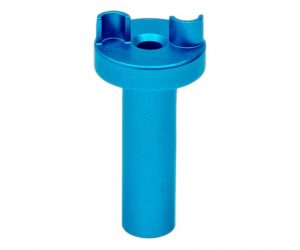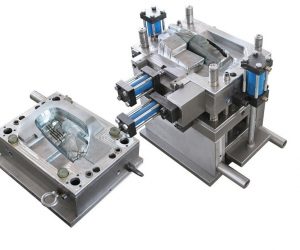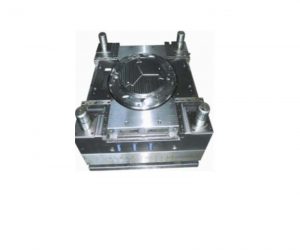Once the mold processing is complete, it’s crucial to ensure the mold undergoes a rigorous testing and repair process. This phase is vital for confirming that the mold can produce high-quality plastic parts reliably and efficiently. In this article, we’ll explore the steps involved in mold testing and the essential repairs that may be required afterward.
The Importance of Mold Testing and Repair
Ensuring Quality and Functionality
Mold testing is far more than just a routine check; it’s an integral part of confirming that the mold functions as intended. A malfunctioning mold can lead to production delays, increased costs, and unsatisfactory products. By thoroughly testing the mold, manufacturers can identify any issues early, allowing for timely interventions. This proactive approach helps ensure a smooth production process that meets all quality standards.
Catching Issues Early
Every manufacturer understands that identifying problems early can save both time and money in the long run. By testing the mold right after processing, any defects can be detected before they escalate. Whether these defects stem from the mold itself or the processing conditions, early identification is key. For example, if a mold consistently produces parts with flash or warpage, pinpointing the root cause allows for effective solutions to be implemented.
The Mold Testing Process
Initial Inspection
The first step in the testing process involves a detailed visual inspection of the mold. Here, technicians check for visible defects such as cracks or misalignments. It’s also essential to verify the assembly and alignment of all mold components, ensuring everything is set up correctly before diving into more complex evaluations.
Conducting a Mold Trial Run
After the initial inspection, the mold is mounted on an injection molding machine for a trial run, producing a sample of plastic parts. This trial run evaluates various performance aspects: Is the mold filling correctly? Are the cooling and ejection systems working as they should? Each of these factors plays a critical role in the mold's overall efficiency.
Evaluating Part Quality
Once the trial run is complete, it’s time to inspect the produced plastic parts. Here, technicians assess attributes like dimensional accuracy, surface finish, and overall quality. Any defects, whether they be flash, short shots, or sink marks, are documented carefully. For instance, if parts exhibit signs of warping, it’s essential to determine if the issue arises from the mold design or the injection process itself.
Optimizing the Injection Molding Process
Following the evaluation, manufacturers may need to adjust various injection molding parameters based on the trial results. This could involve modifying cycle times, injection pressures, or temperature settings. Think of this step as tuning a musical instrument; even small adjustments can lead to a harmonious outcome.
Checking Mold Functionality
Next, a comprehensive functionality check of the mold is conducted. This involves testing critical systems like the ejection mechanism, cooling channels, and gate systems. Any components that are malfunctioning or underperforming are noted for further attention and necessary repairs.
Mold Repair and Adjustment
Addressing Identified Issues
If any problems are found during testing, the mold must be repaired or adjusted accordingly. Common repairs might include replacing damaged components, fine-tuning ejection pins, or enhancing the cooling system’s efficiency. These steps ensure the mold can consistently produce high-quality parts.
Conducting a Detailed Analysis Before Repairs
Before diving into repairs, it’s crucial to perform a thorough analysis of any defects. This often involves examining the problematic parts and understanding the specific causes of the issues. Accurately diagnosing the root problem—whether it stems from the mold design, processing conditions, or material selection—is essential for effective resolution. For instance, if a part consistently warps, one must evaluate both the cooling rate and mold design to identify the source of the problem.
Performing Additional Trials
Once repairs and adjustments have been made, additional trial runs are conducted to verify that issues have been resolved. The parts produced during these trials are subject to another round of inspection to confirm they meet quality standards. This step is akin to a final dress rehearsal before a big performance — every detail matters!
Final Inspection and Approval
After successfully passing all tests and validation phases, the mold undergoes a final inspection. This ensures everything is in optimal condition for production. It's also a good time to train operators and production personnel on how to operate the mold effectively and maintain its performance.
Ready for Production
With the mold validated and approved, it’s now ready for regular production use. However, this isn’t the end of the journey. Throughout its lifespan, the mold requires ongoing monitoring, maintenance, and occasional repairs to ensure it remains in peak condition. Regular checks can help prevent minor issues from becoming major problems, ultimately extending the mold's life and reducing costs.
Conclusion
Mold testing and repair are critical components of the mold processing cycle. They ensure that the mold meets the required specifications and help prevent production delays, thereby enhancing overall efficiency. By investing time in rigorous testing and making any necessary repairs before production starts, manufacturers can guarantee high-quality plastic parts that meet customer expectations.
Frequently Asked Questions (FAQs)
1. Why is mold testing essential after processing?
Mold testing is essential after processing because it validates the mold’s functionality and performance. This crucial step helps identify any potential defects that could impact the quality of the produced parts. By testing the mold, manufacturers can proactively address issues, ensuring that the mold can produce parts that meet all necessary specifications before entering mass production. Neglecting this step could lead to costly downtime, increased scrap rates, and dissatisfied customers.
2. What are common issues that may arise during mold testing?
Common issues that may arise during mold testing include flash (excess material along the parting lines), short shots (incomplete filling of the mold), warpage (deformation of parts), and sink marks (indentations on the surface of molded parts). These problems can result from various factors, including incorrect processing conditions, subpar mold design, or material selection. Identifying the root causes of these issues is critical, as it guides manufacturers in making the necessary adjustments to ensure high-quality production.





